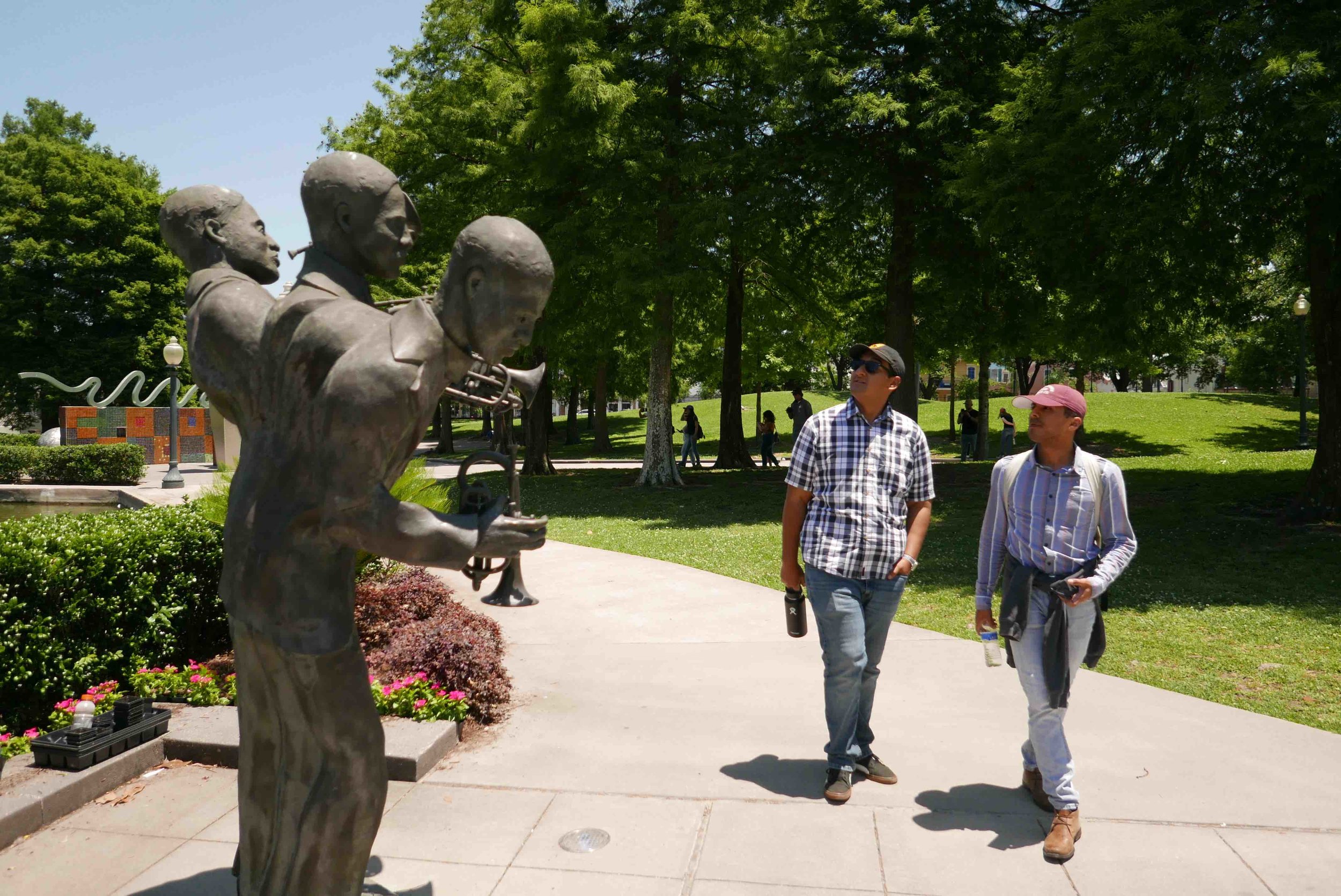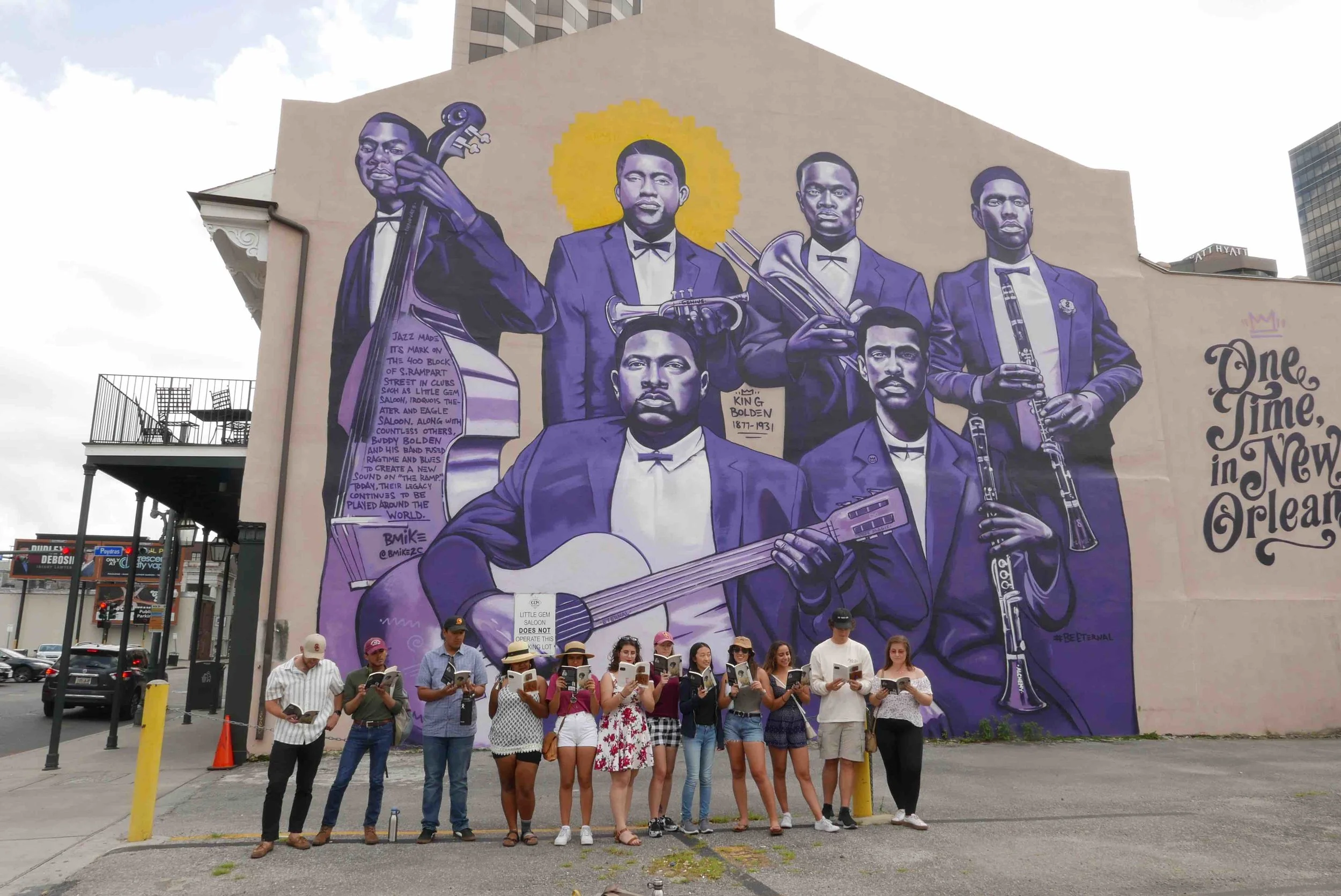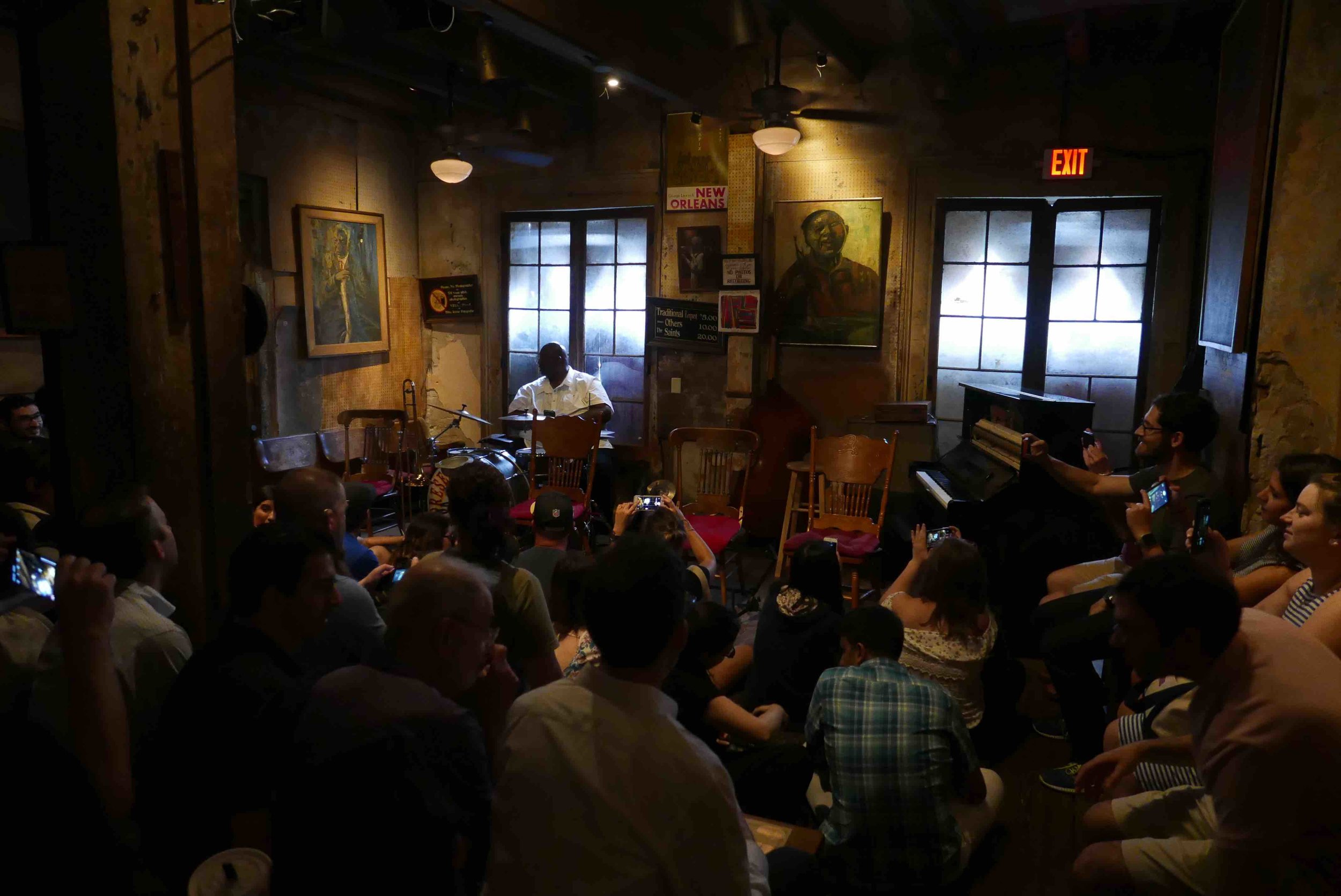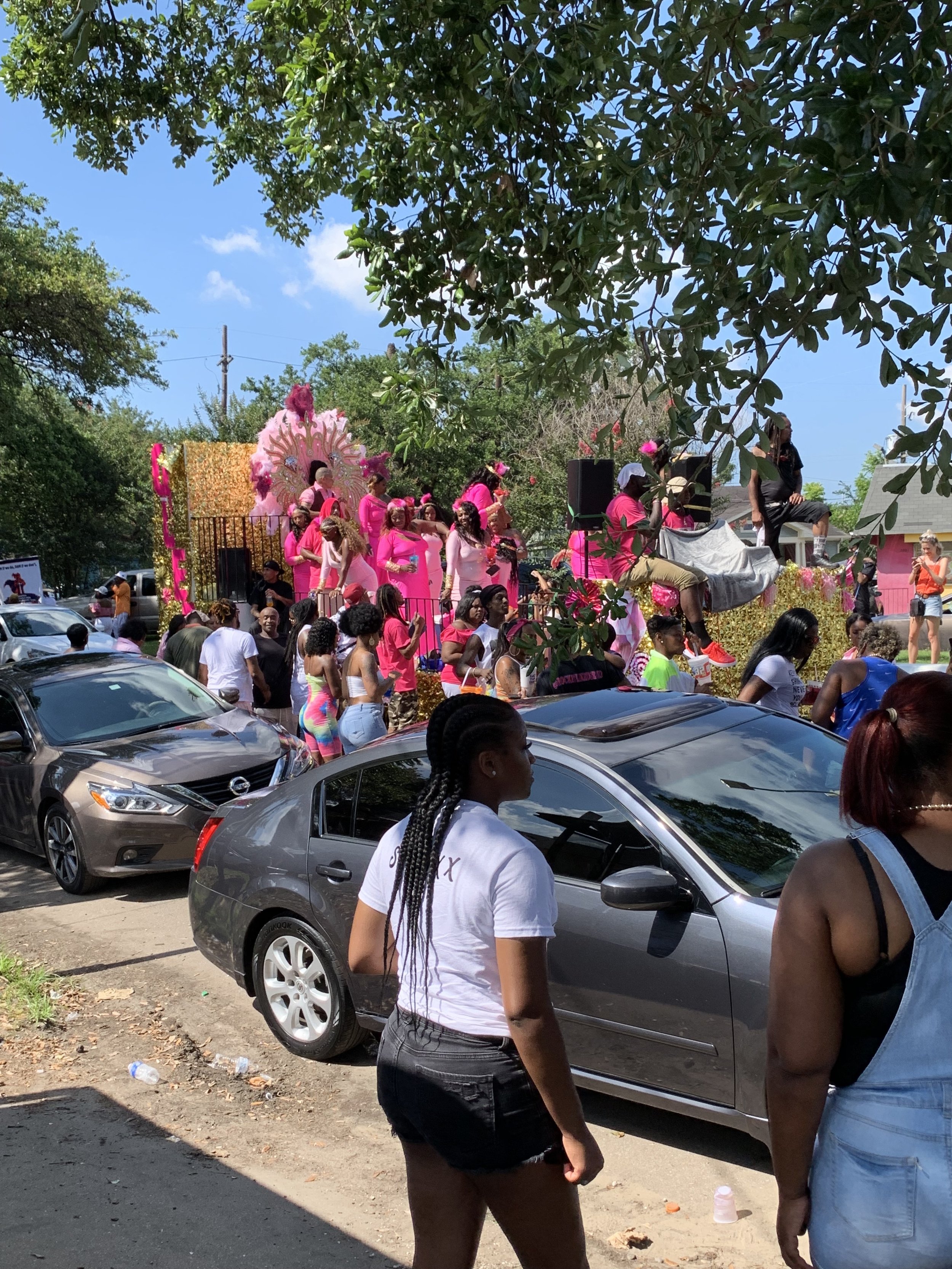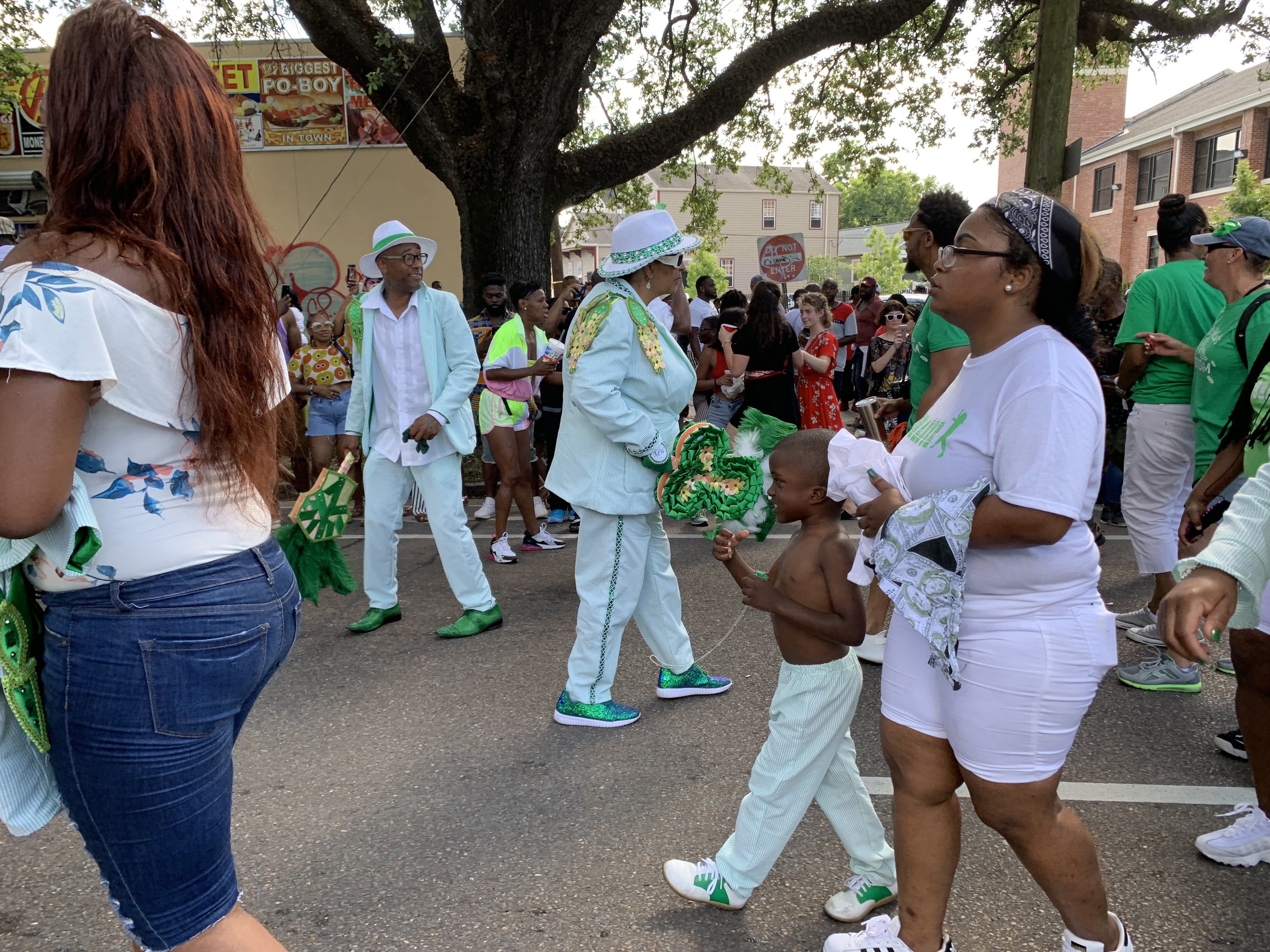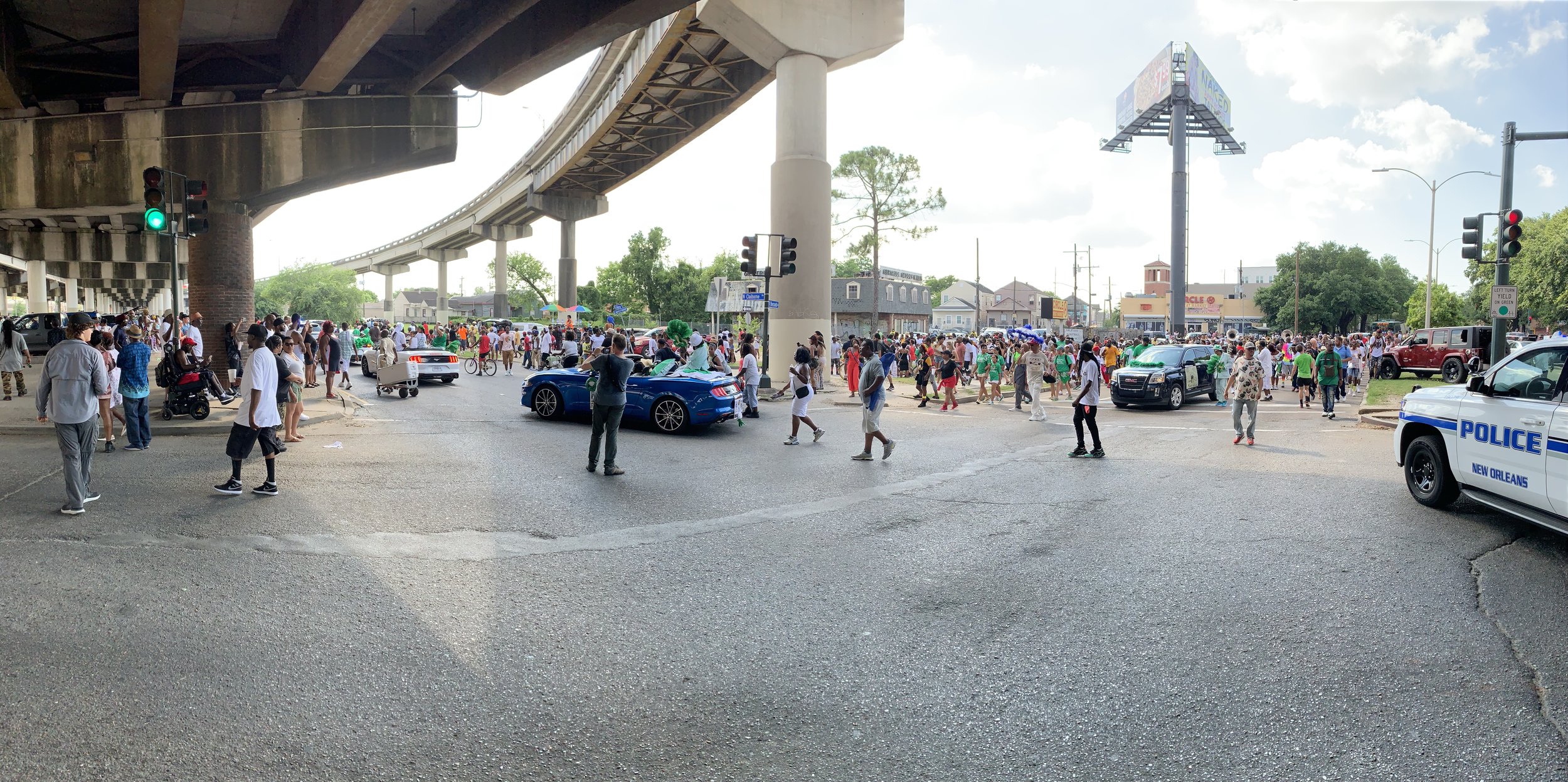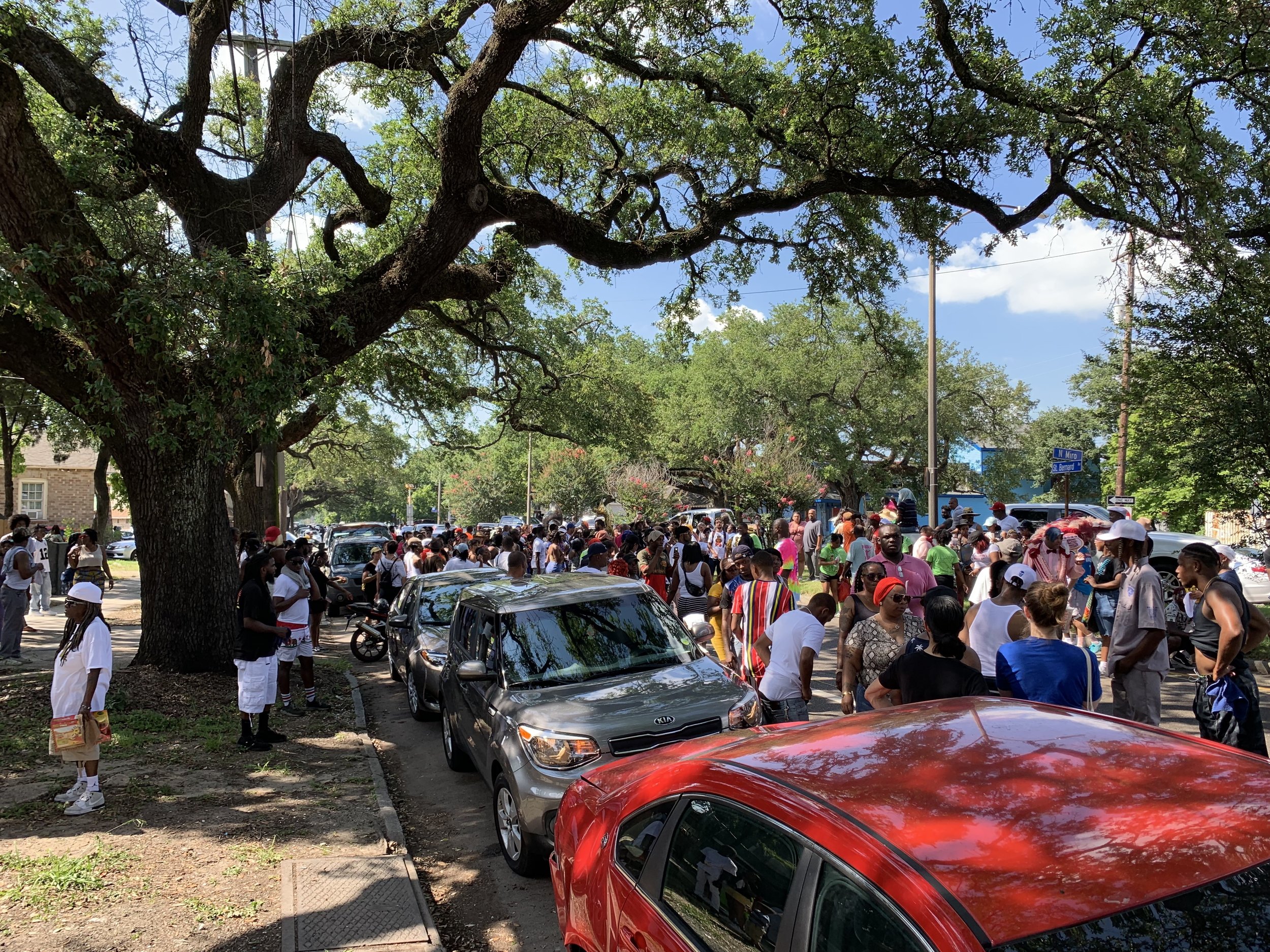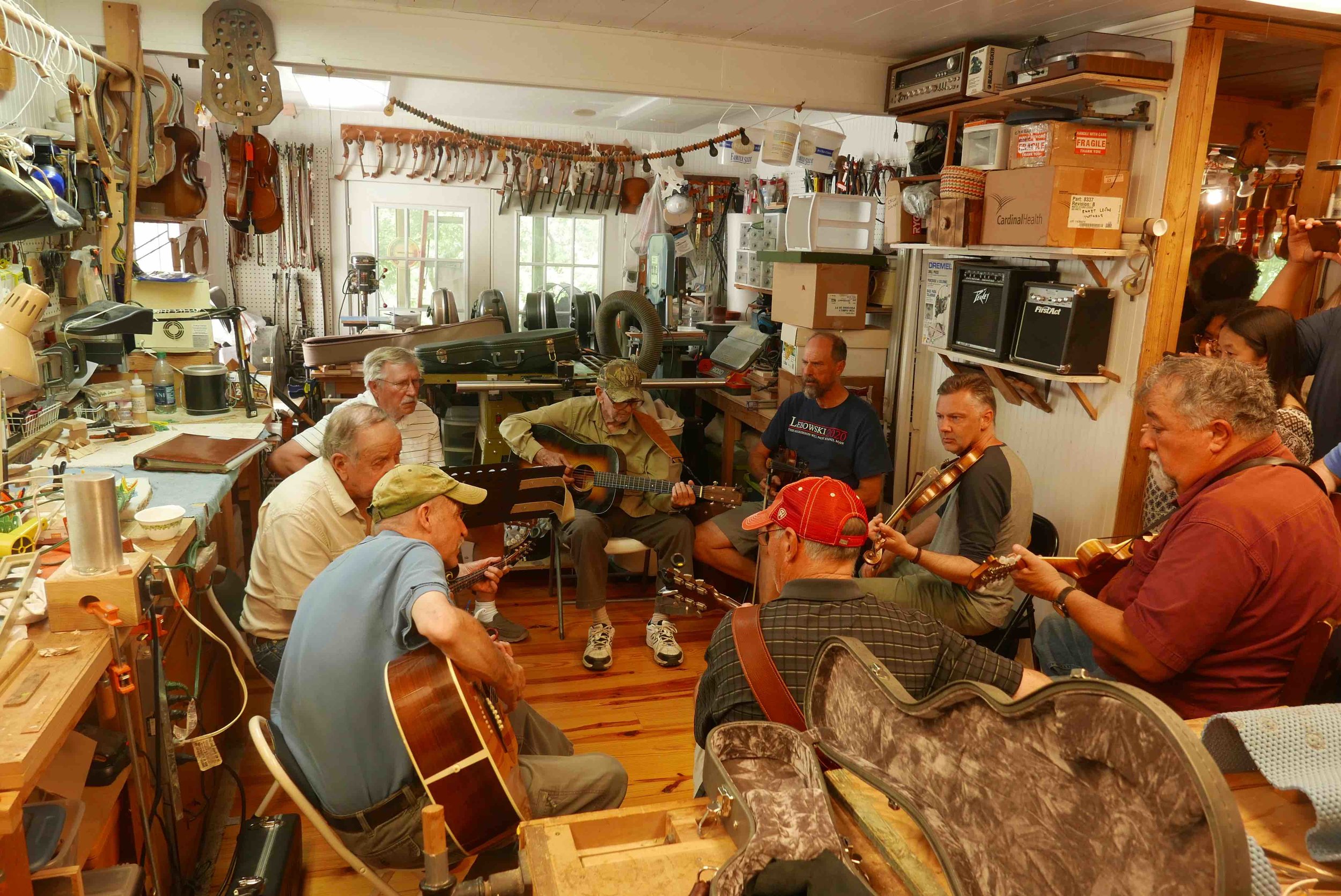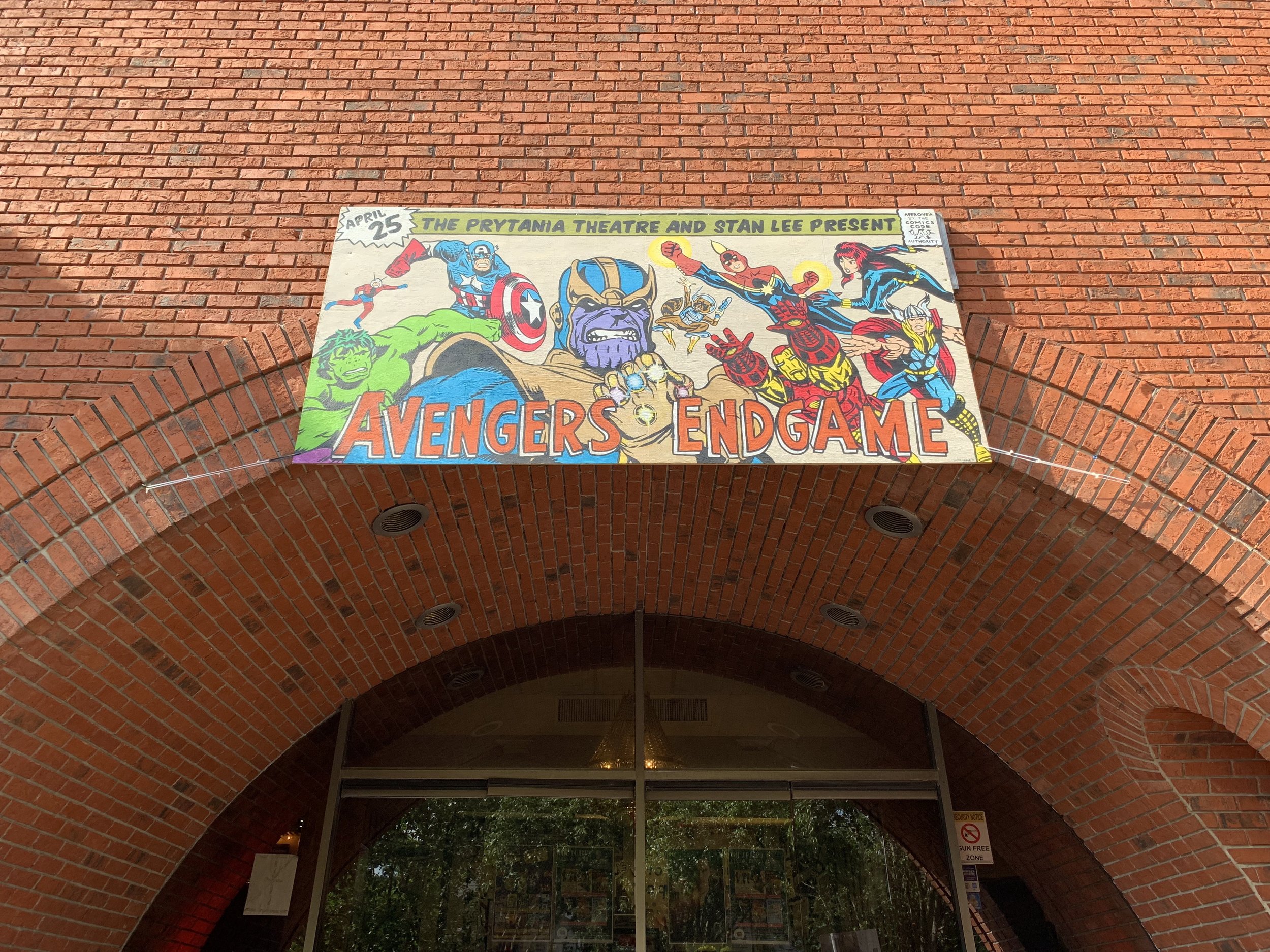How does one blog about New Orleans or write anything that can possibly do the city justice? It’s a daunting task, asking the impossible really and yet so many fantastic artists have been able to capture the very essence of this vivacious place so it is possible. My recent days have taught me that much, and also that there is such a thing as too much powdered sugar on a beignet (take note if you’re reading this, Café Du Monde). All jokes aside for this paragraph, I will attempt to relive and reiterate the myriad of emotions that New Orleans can illicit in the short span of eleven days.
Jackson Square
The first couple days are a blur. Not because of alcohol but because the sheer wall of information I’ve absorbed on a daily basis has blended into a stronger mixture than any bartender here could concoct. It’s overwhelming to look back at, to separate where one memory ends and another begins. Walking tours have proved to be our bread and butter, providing an exhaustive – sorry – exhilarating look into a city that really needs more than eleven days to explore. But we persevered. Jackson Square was our first stop, a short and sweaty walk from the Lafayette Hotel through an urban swamp where at least four people said they could read my future for varying prices though none had the ability to foresee me saying ‘no’ every time. Arriving upon Jackson Square is a conflicting experience. It’s a beautiful plot of perfectly pruned land whose serenity is punctured by the relaxing flow of fountains and a statue of Andrew Jackson that can’t be described as anything short of majestic. There he is, the absolute center of attention, his bronze battle outfit blowing in the wind while his war-horse rears up upon powerful hind legs. The statue is incredible, it’s impossible to say otherwise. The massive St. Louis Cathedral roars its agreement behind him. We celebrate him with this monument and simultaneously forget his signing off on the Trail of Tears – if I need to explain that then I would direct you to the internet for the sake of time. But that’s what New Orleans is, it’s the south. They revere their heroes like any group of people would. Drive around the city though, and you can see the future catching up – four monuments stand strangely empty as racial and political issues spark greater debate within our country, yet, the monuments’ message is still the same: no matter how far you progress, you cannot forget your history. New Orleans is the epitome of that idea.
The Garden District. A beautiful glide through town on the streetcar (I was kindly corrected after calling it a trolley) took us to a part of town made up of plantation style mansions, each in their own unique style, where live-oak trees stand tall and numerous, Spanish moss hanging from their branches while their roots rise from the ground, deforming the sidewalks. We strolled through the streets, past the house Anne Rice (Interview With a Vampire) lived in, onto Lafayette cemetery where marble tombs replaced the city skyscrapers, stacked high to accommodate the hurricanes so that as flood waters rose, the bodies underground wouldn’t rise with them. Like all things, that took an ‘oh, shit’ moment to realize before adapting, resulting in the magnificent tombs we see today.
Lafayette Cemetery
Marquee at the Prytania Theater
It’s easy to envision a vampire stalking unsuspecting victims in the darkness like they did in Interview, but we couldn’t fraternize with the supernatural forever and next moved into the world of jazz with Buddy Bolden in Coming Through Slaughter, a splintering novel that depicts Bolden’s incredible career as a cornetist and his descent into madness. The novel itself is told through a very fragmented prose, made up of quick sentences and even quicker thoughts. Over the next several days, we explored the city’s jazz offerings, getting a taste of the quickness that accompanied Bolden. While none of us lost our minds, it’s easy to understand how he did. And in a rare twist of fate, the movie Bolden happened to be playing at the Prytania Theater – a quaint, independently owned theater that the main character of Confederacy of Dunces frequents, and often hurls popcorn at the screen. The movie was a great representation of Bolden’s descent, effectively incorporating quick cuts and blending sceneries to demonstrate how Bolden’s mind deteriorated. We passed by the Little Gem Saloon, where Bolden came to fame, whose rear wall is covered in an incredible mural depicting the Bolden Band; we listened to live music at Preservation Hall, packed into a tiny rustic room like sardines as a group of extremely talented musicians serenaded us with the blaring taste of jazz; we attended bars strictly with live music and danced into the early hours of the morning as if Bolden himself stood on the stage and fed us the energy we needed to keep our feet moving. But all these wonderful experiences come with a price – exhaustion. The memories blend together with repetition and you slowly being to grasp Bolden’s predicament: the lifestyle of a jazz sensation coupled with the vices New Orleans have to offer on a daily basis drove him to insanity, a true shame. While Bolden’s death certainly was a tragedy to the jazz community, the musicians of New Orleans have made sure, all these years later, that the music would never die.
